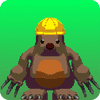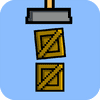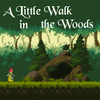Discover the World of Game Development: Easiest Games to Program and Resources to Get Started
Have you ever wondered how your favorite video games come to life? Maybe you’ve dreamed of creating your own games but aren’t sure where to start. In this article, we’ll explore the easiest types of games to program, where to find resources to begin programming, and how to encourage kids to dive into the exciting world of game development.
Getting Started: Easiest Games to Program
If you’re new to game development, starting with simpler games can be a great way to build confidence and learn the basics of programming languages. Here are a few types of games that are relatively easier to program:
1. Text-based Games
Text adventures or interactive fiction games are a fantastic starting point. These games rely less on complex graphics and more on storytelling and user interaction. You can create intriguing narratives where players make choices that affect the outcome of the game. Tools like Twine or Inform 7 are popular choices for creating text-based games.
2. 2D Platformers
Games like classic Mario Bros. are iconic examples of 2D platformers. These games involve simple physics and mechanics, making them easier to implement compared to 3D games. You can start with basic movements, collisions, and simple enemy AI using game engines such as Unity or Godot.
3. Puzzle Games
Puzzle games, such as match-three or Sudoku-style games, can be straightforward to program. These games often involve manipulating objects or solving logical challenges, which are achievable with basic programming skills. Libraries like Pygame for Python or Phaser for JavaScript can simplify the development process for these types of games.
Where to Find Resources for Programming
Now that you’re excited to start programming games, let’s talk about where to find the right resources:
1. Online Learning Platforms
Platforms like Coursera, Udemy, and Khan Academy offer courses on game development using various programming languages. Look for courses that focus on beginner-friendly languages like Python or JavaScript. These courses often include hands-on projects where you can build games from scratch.
2. YouTube Tutorials
YouTube is a treasure trove of tutorial videos on game development. Channels like “The Cherno” or “Brackeys” offer step-by-step guides on creating games from scratch using different programming languages. You can learn everything from setting up your development environment to implementing advanced game mechanics.
3. Community Forums and Blogs
Joining online forums such as Stack Overflow or game development communities on Reddit can provide invaluable support and advice from experienced developers. Blogs like Gamasutra also publish articles and tutorials on game development, covering topics from game design principles to optimization techniques.
Motivating Kids to Learn Programming Through Games
Programming can seem intimidating at first, especially for kids. Here are some tips to make it fun and engaging:
1. Gamify Learning
Use platforms like Scratch or Code.org that teach programming through interactive games and puzzles. These platforms are designed to be visually appealing and engaging for children, providing a playful introduction to coding concepts.
2. Start with Visual Programming
Visual programming languages like Scratch allow kids to drag and drop code blocks, making it easier to understand programming concepts without worrying about syntax errors. As they gain confidence, they can transition to text-based languages like Python or JavaScript.
3. Encourage Creativity
Let kids explore their creativity by designing their own games. Whether it’s a simple maze game or a virtual pet simulator, empowering them to create something from scratch fosters a sense of accomplishment. Encourage them to think about game mechanics, storyline, and user interaction to make their games engaging.
Some of the best known games:
- Text-based Games: “Zork” is a classic text adventure game that gained popularity in the 1980s. Players navigated through a richly detailed world using text commands, solving puzzles and uncovering mysteries along the way. Its success stemmed from its immersive storytelling and innovative use of interactive fiction, setting a standard for narrative-driven gaming.
- 2D Platformers: “Super Mario Bros.” revolutionized the gaming industry with its introduction of Mario, a plumber navigating through colorful worlds filled with obstacles and enemies. Its success can be attributed to its precise controls, imaginative level design, and memorable characters, making it accessible yet challenging for players of all ages.
- Puzzle Games: “Tetris” is a timeless puzzle game where players arrange falling blocks to create complete lines. Its addictive gameplay and simple yet strategic mechanics have made it a staple in gaming culture since its release. The game’s universal appeal lies in its easy-to-learn, difficult-to-master gameplay that keeps players coming back for more.
Each of these games exemplifies the strengths of their respective categories, showcasing how innovative gameplay, engaging mechanics, and timeless appeal can lead to enduring success in the gaming industry.
Conclusion
Embarking on a journey into game development is an exciting endeavor. By starting with easier game types, leveraging available resources, and making learning enjoyable for kids, anyone can take their first steps towards becoming a game developer. Remember, the key is to start small, stay curious, and have fun along the way!
Now that you have a roadmap to begin your adventure in game development, what type of game would you like to create first? Share your thoughts in the comments below!




















